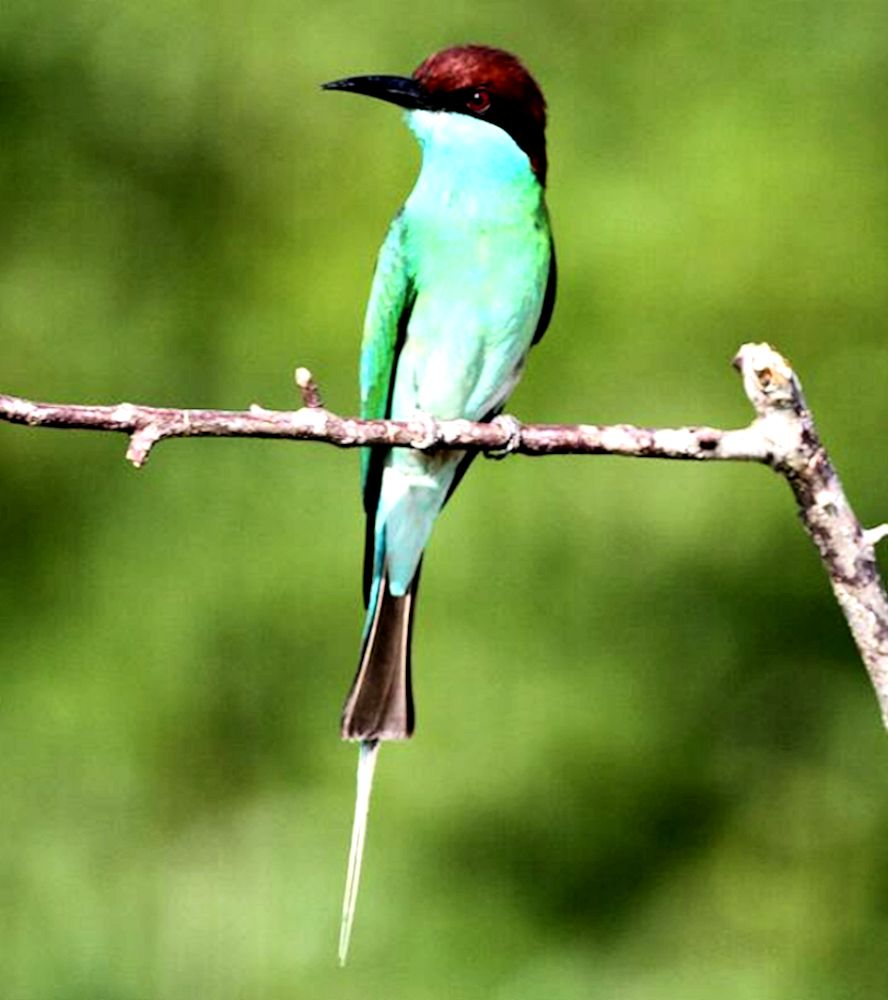
Malaysian Birds
Blue-throated Bee-eater
|
Size & diagnostic markings:- 23 Cm. The Blue-throated unlike Blue-tailed would avoid urban areas. Although they may come to the Parks in urban areas but never in garden. The Blue-throated Bee-eater is slimmer in appearance and also shorter at 23 cm. The streamers is another extension for 9 cm. The upper part is pale blue. The crown is significantly dark chestnut color also extending to the back. The blue throat is diagnostic and followed by bright green in the under part. Distribution :- This is a bird of the Greater Sundas and breeds in south China. It is also breeding in Malaysia while the bird is a visitor Habitats & preferences:- This is a lowland open country bird. Prefers heavily forested areas with a river nearby. Nests are in open areas where there are sandy mounts with vertical sides. The Blue-throated Bee-eater is native to the Islands of Philippines and the Sunda Archipelago. This bird breeds in China during the months of March - August. The bird spends its winter period in the south and are passage migrants through South Thailand and Malaysia. Around the same time as the Blue-tailed Bee-eater are flying into Malaysia in August, could also be the same time the Blue-throated Bee-eater are passing through on their way to Indonesia. It is during this period that I saw groups of 10/20 birds in the Kiara Hills for a few days. Then the group re-appear after days of absence. Could be the different groups passing by. On the northwards bound journey, the Blue-tailed Bee-eater would have left early in February, followed by a short period when the Blue-throated Bee-eater was sighted. At the same time, there is also a population of Blue-throated Bee-eaters staying in Malaysia as residents and breeding here as well using the same breeding time frame. It is interesting that time like May, where little Blue-tailed was seen, that I saw the Blue-throated. In early May there were 3 newly fledged Blue-throated Bee-eater in FRIM. Then, we saw adults in Bidor. The local residents when encountered are in pairs or with the siblings of 3/4 birds. Obviously different from scenes of 10s of birds when meeting up with a group of passage migrants. The big question I asked myself, most resident Bee-eaters have remained in remote countryside and forest edge. How would the scene be, when the wintering Blue-tailed are in the country?
|
